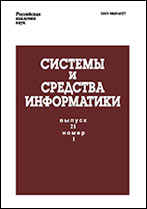|
Building .NET-client applications in distributed circuit computer-aided design
V. N. Gridina, V. I. Anisimovba, A. D. Ahmadb
a Design Information Technologies Center, Russian Academy of
Sciences, 7a Marshal Biryuzov Str., Odintsovo, Moscow Region 143000, Russian Federation
b Saint Petersburg Electrotechnical University "LETI", 5 Professora Popova Str., St. Petersburg 197376, Russian Federation
Abstract:
The paper deals with the general principles and methods of building client .NET-applications in distributed circuit computer-aided design. It is shown that the construction of such applications requires the transfer and reception of a large number of arguments with simple and complex data types. It is noted that the organization should consider the client–server interactions in heterogeneous environments, when client and server applications are written in different languages. The paper describes the technique of converting data to a uniform manner, which ensures reliable operation of client–server interactions in heterogeneous environments. It is proposed to include the additional information software Web service method, the purpose of which is to expand the WSDL-document in which there is no information about selected when building a Web service methods converting multidimensional arrays to a unified form. The paper describes the content of the additional information of the Web service method necessary to build the client application. The paper describes the particular features of client build Windows-based applications and Web applications.
Keywords:
computer-aided design; circuit design automation; client-server interaction; Web services; heterogeneous environments; distributed systems.
Received: 07.09.2015
Citation:
V. N. Gridin, V. I. Anisimov, A. D. Ahmad, “Building .NET-client applications in distributed circuit computer-aided design”, Sistemy i Sredstva Inform., 26:1 (2016), 76–85
Linking options:
https://www.mathnet.ru/eng/ssi450 https://www.mathnet.ru/eng/ssi/v26/i1/p76
|

| Statistics & downloads: |
| Abstract page: | 189 | | Full-text PDF : | 48 | | References: | 45 |
|




 Contact us:
Contact us: Terms of Use
Terms of Use
 Registration to the website
Registration to the website Logotypes
Logotypes








 Citation in format
Citation in format 